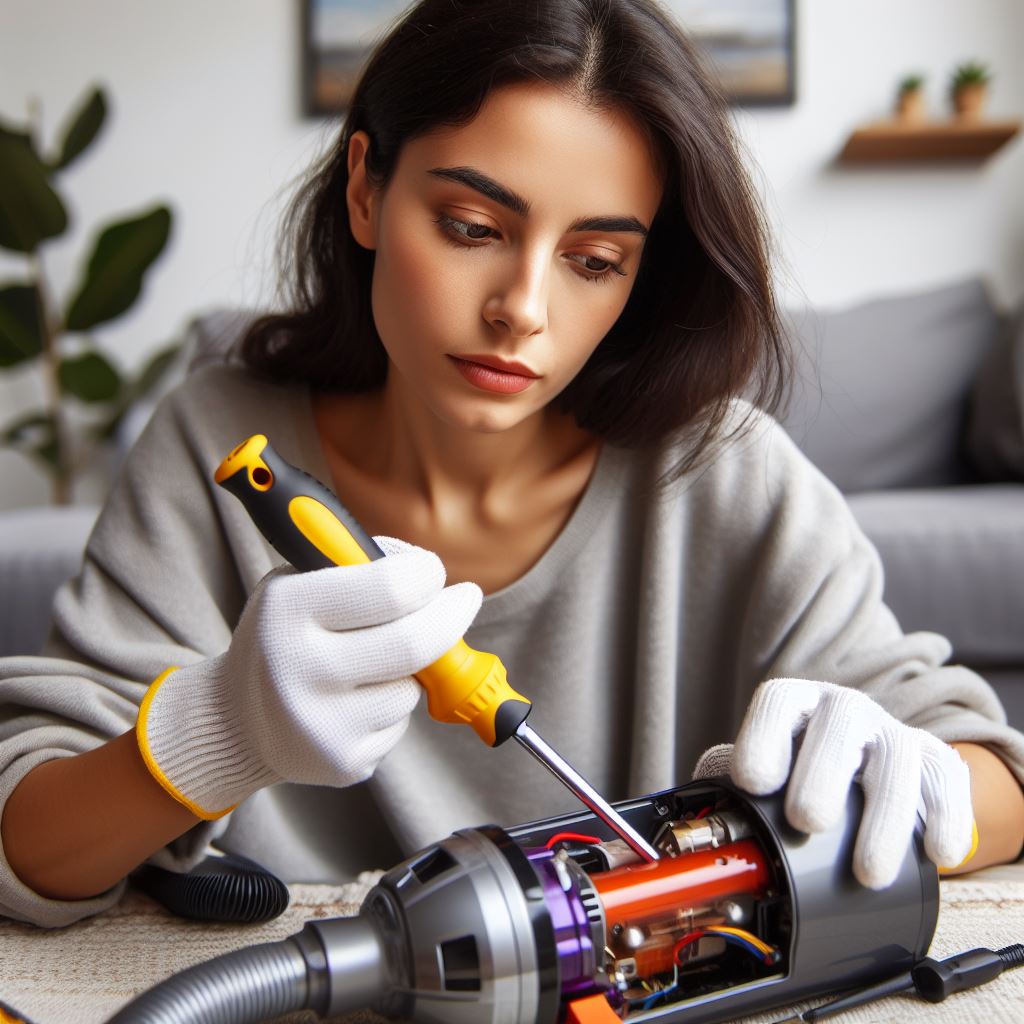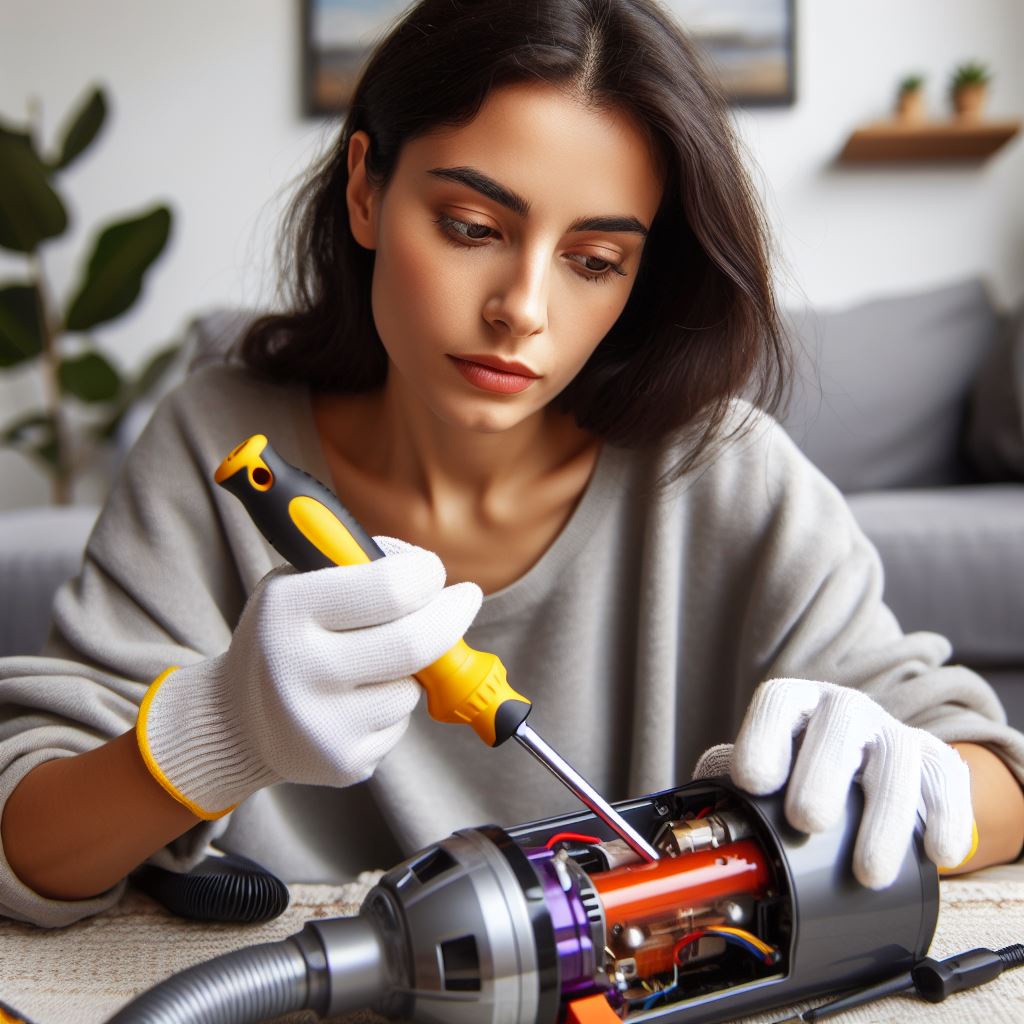The unassuming handheld vacuum cleaner: a trusty companion for quick clean-ups, upholstery refreshers, and warriors against crumbs. But like any workhorse, proper care is essential to ensure it keeps battling dirt and debris for years to come.
Key Highlights
- Regular maintenance (emptying canister, cleaning filters, maintaining brushroll) extends the lifespan and performance of your handheld vacuum cleaner.
- Proper battery care (avoiding full discharges, storing at room temperature) optimizes battery life for cordless models.
- Simple practices like using the correct attachments and avoiding large debris prevent damage and ensure efficient cleaning with your handheld vacuum.

Picture Credit Goes to PowerCleany Handheld Vacuums
This guide equips you with the knowledge to maximize your handheld vacuum's lifespan, saving you money and keeping your cleaning routine efficient. Here, we'll delve into the key maintenance practices, troubleshooting tips, and best practices to keep your handheld vacuum a loyal cleaning ally.
The Importance of Regular Maintenance
Just like a car needs regular oil changes, your handheld vacuum thrives on consistent maintenance. Here's why:
- Optimal Performance: Clogged filters and dust canisters hinder suction power, making cleaning less effective. Regular cleaning ensures peak performance.
- Motor Protection: A neglected vacuum strains its motor to overcome blockages, leading to premature wear and tear.
- Battery Longevity: Proper care, like avoiding full discharges, extends battery life for cordless models.
- Saves Money: Timely maintenance prevents costly repairs or replacements down the line.
PowerCleany is a brand specialising in handheld vacuum cleaners, aiming to make cleaning homes and cars convenient and efficient. Their flagship product, the PowerClean Handheld Vacuum Cleaner, boasts strong suction power for dirt and dust, a cordless design for portability, a compact size for reaching tight spaces, and multiple attachments for versatile cleaning. While specific models and variations are limited in available information, They position themselves as a provider of powerful and convenient solutions for everyday cleaning needs, particularly with handheld vacuums.
Maintaining Your Handheld Vacuum: A Step-by-Step Guide
Here's a breakdown of the key maintenance tasks for your handheld vacuum:
1. Emptying the Dust Canister (After Each Use)
- Turn off and unplug: Safety first! Always ensure the vacuum is off and unplugged before emptying the canister.
- Locate and detach: Find the dust canister release button and remove the canister.
- Empty the contents: Dispose of the debris in a trash bin.
- Optional: Wash the canister (refer to manual): Some canisters are washable, allowing for a deeper clean. Always consult the user manual for specific instructions.
2. Cleaning the Filters (Weekly or Bi-weekly)
Filters trap dust particles, preventing them from reaching the motor. Here's how to keep them clean:
- Identify filter types: Your vacuum may have a pre-motor filter and a secondary (often HEPA) filter. Refer to the manual for their location.
- Dry or washable?: Depending on the filter type, you may need to dry it completely before reinserting it. Some filters are washable, so check the user manual for cleaning instructions or you can take help from online resources regarding using of handheld vacuums.
- Gently tap or brush: For dry filters, tap them gently to remove loose debris. You can also use a soft brush to dislodge dust particles.
- Complete drying is crucial: Never reinsert a damp or wet filter. Allow it to air dry completely before placing it back in the vacuum.
3. Maintaining the Brushroll (Weekly)
The brushroll agitates dirt and debris towards the suction nozzle. Here's how to keep it tangle-free:
- Turn off and unplug: Safety first!
- Locate the brushroll compartment: This may require detaching a nozzle or using a release mechanism.
- Remove debris: Use scissors to carefully cut away any hair, string, or other tangled material wrapped around the brushroll.
- Inspect the brushroll for damage: Look for any worn bristles or loose components that might need replacement.
4. Taking Care of the Battery (Cordless Models)
Battery life is a crucial factor for cordless handheld vacuums. Here's how to optimize it:
- Avoid full discharges: Letting the battery completely drain can shorten its lifespan. Recharge when the indicator light signals low battery.
- Store at room temperature: Extreme temperatures can damage the battery. Avoid storing the vacuum in very hot or cold environments.
- Proper charging practices: Use the original charger that came with your vacuum for optimal performance.
- Consider partial discharges (monthly): Some recommend allowing the battery to fully discharge once a month to maintain its capacity. However, consult your user manual for specific recommendations.
5. General Cleaning and Storage
- Wipe down the exterior: Use a damp cloth to wipe down the vacuum's exterior, removing any dust or debris build-up.
- Store properly: When not in use, store your vacuum in a cool, dry place. Avoid direct sunlight or extreme temperatures. Coiling the cord loosely prevents kinks and damage.
Troubleshooting Common Handheld Vacuum Issues
Here are some common problems you might encounter with your handheld vacuum, along with potential solutions:
- Reduced Suction Power: This could be caused by a clogged filter, dust canister, or brushroll. Clean all the components as described earlier.
- Vacuum Not Turning On: Check if the vacuum is charged (cordless models) and ensure it's properly plugged in (corded models). Verify the power outlet is functioning.
- Unusual Noises: Loud or grinding noises might indicate a damaged brushroll or internal component. Check for debris or objects lodged within the vacuum. If the noise persists, consult the user manual or a qualified repair professional.
- Indicator Lights Not Working: Refer to the user manual to understand the meaning of each indicator light. A faulty light might not necessarily mean a major issue with the vacuum itself.
Preventing Damage: Best Practices for Using Your Handheld Vacuum
Here are some additional tips to extend the life of your handheld vacuum:
- Avoid large debris: The handheld vacuum isn't designed for large chunks or heavy objects. Pick up these items manually before using the vacuum.
- Mind the liquids: Most handheld vacuums are not intended for wet messes. Avoid sucking up liquids or overly damp debris.
- Empty before reaching capacity: Don't wait until the canister is completely full to empty it. Regularly emptying it maintains optimal suction power and prevents strain on the motor.
- Use the correct attachments: Different attachments are designed for specific cleaning tasks. Using the right attachment ensures efficient cleaning and prevents unnecessary wear and tear on the vacuum.
- Gentle handling: Avoid dropping or roughly handling the vacuum. Treat it with care to prevent internal damage.
Replacement Parts and When to Consider a New Vacuum
Even with proper care, some parts may wear out over time. Here's what to consider:
- Filters: Most filters need to be replaced periodically. Refer to your user manual for the recommended replacement frequency.
- Brushroll: If the brushroll bristles become excessively worn or damaged, replacing it might be necessary.
- Battery (Cordless Models): If the cordless vacuum's battery life significantly declines even with proper care, replacement might be needed. However, consider the cost of the battery compared to purchasing a new vacuum.
Ultimately, the decision to replace your handheld vacuum depends on the extent of wear and tear, the repair costs involved, and the availability of replacement parts. If repairs are expensive or parts are unavailable, it might be more cost-effective to invest in a new vacuum cleaner.
Conclusion
By following these simple maintenance practices and best practices, you can significantly extend the lifespan of your handheld vacuum. This not only saves you money but also keeps your trusty cleaning companion in top shape for years to come, ensuring a cleaner and more efficient home environment. Remember, a little care goes a long way in keeping your handheld vacuum a loyal ally in your cleaning battles.
Additional Resources
Here is the guide for your reference on using handheld vacuums


No comments yet